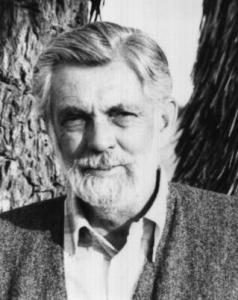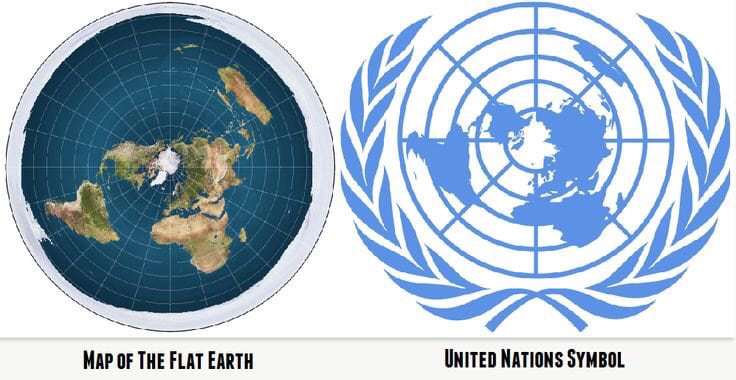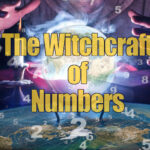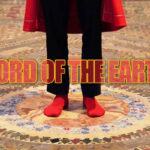Copyright 1980 Robert J. Schadewald
Reprinted from Science Digest, July 1980
“The facts are simple,” says Charles K. Johnson, president of the International Flat Earth Research Society. “The earth is flat.”
As you stand in his front yard, it is hard to argue the point. From among the Joshua trees, creosote bushes, and tumbleweeds surrounding his southern California hillside home, you have a spectacular view of the Mojave Desert. It looks as flat as a pool table. Nearly 20 miles to the west lies the small city of Lancaster; you can see right over it. Beyond Lancaster, 20 more miles as the cueball rolls, the Tehachepi Mountains rise up from the desert floor. Los Angeles is not far to the south.
Near Lancaster, you see the Rockwell International plant where the Space Shuttle was built. To the north, beyond the next hill, lies Edwards Air Force Base, where the Shuttle was tested. There, also, the Shuttle will land when it returns from orbiting the earth. (At least, that’s NASA’s story.)
“You can’t orbit a flat earth,” says Mr. Johnson. “The Space Shuttle is a joke—and a very ludicrous joke.”
His soft voice carries conviction, for Charles Johnson is on the level. He believes that the main purpose of the space program is to prop up a dying myth—the myth that the earth is a globe.
“Nobody knows anything about the true shape of the world,” he contends. “The known, inhabited world is flat. Just as a guess, I’d say that the dome of heaven is about 4,000 miles away, and the stars are about as far as San Francisco is from Boston.”
As shown in a map published by Johnson, the known world is as circular and as flat as a phonograph record. The North Pole is at the center. At the outer edge lies the southern ice, reputed to be a wall 150 feet high; no one has ever crossed it, and therefore what lies beyond is unknown.
The sun and moon, in the Johnson version, are only about 32 miles in diameter. They circle above the earth in the vicinity of the equator, and their apparent rising and setting are tricks of perspective, like railroad tracks that appear to meet in the distance. The moon shines by its own light and is not eclipsed by the earth. Rather, lunar eclipses are caused by an unseen dark body occasionally passing in front of the moon.
Johnson’s beliefs are firmly grounded in the Bible. Many verses of the Old Testament imply that the earth is flat, but there’s more to it than that. According to the New Testament, Jesus ascended up into heaven.
“The whole point of the Copernican theory is to get rid of Jesus by saying there is no up and no down,” declares Johnson. “The spinning ball thing just makes the whole Bible a big joke.”
Not the Bible but Johnson’s own common sense allowed him to see through the globe myth while he was still in grade school. He contends that sensible people all over the world, not just Bible believers, realize that the earth really is flat.
“Wherever you find people with a great reservoir of common sense,” he says, “they don’t believe idiotic things such as the earth spinning around the sun. Reasonable, intelligent people have always recognized that the earth is flat.”
He pauses for a sip of coffee, his eyes sparkling with animation. At 56, Charles Johnson is a bearded, distinguished-looking man who drinks coffee seemingly by the gallon. He chain-smokes, hand-rolling cigarettes so skillfully that they seem factory made. Unlike the stereotypical prophet, he has a wry sense of humor and a booming laugh. Fond of plays on words, he consistently pronounces Nicolaus Koppernigk’s Latinized surname as “co-pernicious.”
The Flat Earth Society’s presidency descended upon Charles Johnson in accord with the last wishes of its founder, Samuel Shenton, an Englishman who died in 1971. The society, which will round out a quarter-century next year, is a spiritual inheritor of the Universal Zetetic Society, which flourished in England in the last century.
The cosmos of the Zetetics.

Under Johnson’s full-time presidency, the society’s paid-up membership has grown from a few persons to a few hundred. Membership is open to anyone who is regarded as sincerely seeking the truth; prospective members must sign a statement agreeing never to defame the society. Part of the $10 annual dues pays for a subscription to the Flat Earth News, a marvelously outspoken four-page tabloid quarterly with an editorial style reminiscent of 19th-century rural journalism.
Johnson’s office is barely controlled chaos. Books, papers, and files are everywhere; his desk is covered with correspondence. The flow of letters, still increasing, now runs around 2,000 a year, or a half-dozen every day. Some are properly addressed (Box 2533, Lancaster, CA 93534), but he receives any mail that reaches Lancaster with “flat-earth” on it. And such letters sometimes come from the far edges of the world (an expression which Johnson and his membership accept quite literally). Rummaging in a box on the floor, Johnson produces inquiries from Saudi Arabia, Iran, India.
“Everybody who writes gets an answer,” he reports. “An application or whatever is called for. We serve our purpose in keeping it alive. Whosoever asks, receives.” The “we” includes his wife, Marjory, who is a native of Australia. The Johnsons met by chance in 1959, when they both went into a San Francisco store to buy the same record, Acker Bilk’s haunting “Stranger on the Shore.” They discovered that they had more in common than their tastes in music. They’re both vegetarians, for one thing, but the overriding interest is geography
“Marjory has always known that the earth is flat, too,” says Charles Johnson. “As far as she knew, everybody in Australia knew it. She was rather shocked when she arrived here and found people speaking of Australia as being ‘down under.’ It really offended her. She would get in quite heated arguments with people who seemed to accuse her of coming from down under the world.” Ultimately, Marjory Johnson swore in an affidavit that she had never hung by her feet in Australia.
As secretary of the Flat Earth Society, she assists in running it, and writes a regular column in the News. She has also helped her husband perform experiments to determine the earth’s shape. If it is a sphere, the surface of a large body of water must be curved. The Johnsons have checked the surfaces of Lake Tahoe and the Salton Sea (a shallow salt lake in southern California near the Mexican border) without detecting any curvature.
Their home is a half-mile from the nearest neighbor. Friends drop by now and then, but their primary companions are a half-dozen dogs, several cats, a flock of chickens, and a myriad of sparrows roosting in a Joshua tree just outside the door. No electric-power line runs to the house, for which water must be carried up the hill. The physical isolation is the ultimate in privacy—but another kind of isolation proves to be less desirable.
“We’re two witnesses against the whole world,” observes Charles Johnson. “We’ve chosen that path, but it isolates us from everyone. We’re not complaining; it has to be. But it does kind of get to you sometimes.”
In spite of the loneliness and the frustrations, they press on. Charles Johnson claims that most of the people who shaped our modern world were flat-earthers, and some of them didn’t have it easy, either.
You weren’t aware that flat-earthers have played an important part in history? Well, conventional histories don’t make that clear. But inasmuch as revisionist history is in vogue, Charles Johnson should be recognized as one of the leading practitioners.
“Moses was a flat-earther,” he reveals. “The Flat Earth Society was founded in 1492 B.C., when Moses led the children of Israel out of Egypt and gave them the Ten Commandments at Mount Sinai.”
Conventional biblical chronology dates the Ten Commandments to 1491 B.C., but it may be imprecise. Perhaps Johnson prefers 1492 for the symmetry. It was, after all, in 1492 A.D. that another famous flat-earther made history.
Have you heard the story about Columbus’s problems with his crew? As some tell it, the crew nearly mutinied because they regarded the earth as flat, and feared they might sail off its edge.
“It was exactly the reverse,” explains Johnson. “There was a dispute out on the ship, but it was because Columbus was a flat-earther*. The others believed the earth to be a ball, and they just knew that they were falling over the edge and couldn’t get back. Columbus had to put them in irons and beat them until he convinced them they weren’t going over any curve, and they could return. He finally calmed them down.”
Johnson believes that the ball business—though it goes back to the Greek philosophers—really got rolling after the Protestant Reformation.
“It’s the Church of England that’s taught that the world is a ball,” he argues. “George Washington, on the other hand, was a flat-earther. He broke with England to get away from those superstitions.” If Johnson is right, the American Revolution failed. No prominent American politician is known to have publicly endorsed the flat-earth theory in the past two centuries. Nevertheless, Johnson contends that this nearly happened right after World War II, not for the U.S. alone, but for the entire world. Consider the United Nations:
“Uncle Joe (Stalin), Churchill, and Roosevelt laid the master plan to bring in the New Age under the United Nations,” Johnson discloses with confidence. “The world ruling power was to be right here in this country. After the war, the world would be declared flat and Roosevelt would be elected first president of the world. When the UN Charter was drafted in San Francisco, they took the flat-earth map as their symbol.”
Why declare the world flat? Johnson responds that a prophesied condition for world government (Isaiah 60:20) is that the “sun shall no more go down.” This could be fulfilled by admitting that sunrise and sunset are optical illusions. The UN did adopt for its official seal a world map identical with the one on Johnson’s office wall. But Franklin Roosevelt died coincident with the UN’s birth, and the other imminent events described by Johnson never came about.
What did happen, according to conventional historians, was that Russia and the U.S. began space programs. After the Russians sent up Sputnik in 1957, the space race was on in earnest. The high point came in 1969, when the U.S. landed men on the moon.
That, according to Johnson, is nonsense, because the moon landings were faked by Hollywood studios. He even names the man who wrote the scripts: the science-fiction writer Arthur C. Clarke. But he acknowledges that the moon landings were at least partly successful.
“Until then,” he says, “almost no one seriously considered the world a ball. The landings converted a few of them, but many are coming back now and getting off of it.”
Perhaps the Space Shuttle is intended to bolster the beliefs of these backsliders. Whatever its purpose, Johnson is convinced that it is not intended to actually fly. Because it was built and tested almost in his back yard, he knows many people who worked on it. What they’ve told him about some aspects of its construction only reinforces his convictions.
“They moved it across the field,” he sneers, “and it almost fell apart. All those little side pieces are on with epoxy, and half fell off!”
The Shuttle had other problems besides heat resistant tiles that wouldn’t stick. For instance, when the testers tried to mount it on a 747 for its first piggy-back test flight, it wouldn’t fit.
“Can you imagine that?” chortles Johnson. “Millions of dollars they spent, and it wouldn’t fit! They had to call in a handyman to drill some new holes to make the thing fit. Then they took it up in the air—and some more of it fell to pieces.”
If the Shuttle ever does orbit on its own, it’s supposed to return to Edwards Air Force Base. To Johnson, that’s appropriate enough.
“Do you know what they’re doing at Edwards right now?” he asks. “‘Buck Rogers in the 25th Century’ is made right where they claim they’re going to land the Shuttle. Edwards is strictly a science-fiction base now.
“Buck is a much better science program, considerably more authentic. In fact, I recommend that the government get out of the space business and turn the whole thing over to ABC, CBS, and NBC. The tv networks do a far superior job. They could actually pay the government for rights, and it wouldn’t cost the taxpayers a penny.”
Flat Earth Society members are working actively to bring the Shuttle charade to an end. They hope to force the government to let the public in on what the power elite has known all along: the plane truth.
“When the United States declares the earth is flat,” says Charles Johnson, “and we hope to be instrumental in making it do so, it will be the first nation in all recorded history to be known as a flat-earth nation.
“In the old days, people believed the earth was flat, because it’s logical, but they didn’t have a picture of the way it was, as we have today. Our concept of the world is new.
“Marjory and I are the avant garde. We’re way ahead of the pack.”
— The end —
Postscript: Much has changed since I wrote this article, both in the world at large and in Charles Johnson’s life. In late September 1995, the Johnsons’ venerable high-desert home caught fire. Charles managed to pull Marjory, by then a semi-invalid on supplemental oxygen, to safety, but everything else in the house was destroyed—their personal possessions, the Flat Earth Society library and archives, the membership list, everything. Having no fire insurance, the Johnsons were unable to rebuild. A dilapidated old house trailer, bought as a storage shed, survived the fire, and they took refuge there. A few months later, Marjory fell and broke a hip. She survived hip replacement surgery but never recovered her strength. On May 16, 1996, she died.
The Flat Earth Society lives on, still doing business at Box 2533, Lancaster, CA 93534. Charles Johnson has immersed himself in rebuilding the membership roster. Publication of the Flat Earth News, in hiatus since 1994, will resume with the December 1996 issue.
R.J.S. (10/6/96)
Postscript: Bob Schadewald, author of this essay, died March 12, 2000 at age 57. Charles Johnson died March 19, 2001 at age 76. For nearly 30 years Charles fought the lonely and futile battle to “restore the world to sanity.”
HHA note – *Columbus may have been a flat earther, but before we use him as a role model, we should read a little more about him.













